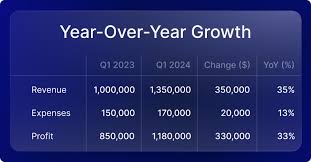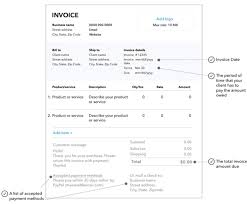Why “YOY” Matters More Than You Think
If you’ve ever read a financial report, business article, or earnings update, chances are you’ve come across the abbreviation YOY. At first glance, it might look confusing, but once you understand it, you’ll realize it’s one of the simplest and most useful ways to measure growth.
stands for Year-over-Year. It’s a method of comparing data from one period (usually a month or quarter) with the same period from the previous year. Businesses, investors, analysts, and even everyday people use to understand performance and trends over time.
In this article, we’ll break down the meaning of why it’s so widely used, how to calculate it, and how it plays a role in real-world decision-making.
What Does YOY Mean?
YOY (Year-over-Year) is a financial and business term used to compare how a certain metric has changed over the course of a year.
For example:
If a company earned $2 million in revenue in Q1 2024 and $1.5 million in Q1 2023, then its revenue growth is 33%.
This approach eliminates short-term fluctuations and provides a clearer picture of whether performance is improving, declining, or staying the same.
Why Is YOY Important?
Year-over-Year analysis is one of the most reliable ways to evaluate growth because it:
Removes seasonality effects – Some businesses do better during holidays, summer, or tax season. Comparing month-to-month can be misleading, but shows true growth.
Simplifies analysis – Instead of looking at complex charts, gives you a quick snapshot of performance.
Helps track progress – Investors and managers use to see if strategies are working.
Builds confidence for decision-making – Governments, organizations, and individuals usefor budgeting, forecasting, and investments.
How to Calculate YOY
The formula for growth is straightforward: YOYGrowth(%)=(CurrentYearValue−PreviousYearValue)PreviousYearValue×100YOY Growth (\%) = \frac{(Current Year Value -Previous Year Value)}{Previous Year Value} \times 100YOYGrowth(%)=PreviousYearValue(CurrentYearValue−PreviousYearValue)×100
Example Calculation
Current year sales: $120,000
Previous year sales: $100,000
YOYGrowth=120,000−100,000100,000×100=20%YOY Growth = \frac{120,000 – 100,000}{100,000} \times 100 = 20\%YOYGrowth=100,000120,000−100,000×100=20%
This means the company’s sales grew 20% YOY.
YOY vs. Other Metrics
YOY is not the only way to measure performance. Let’s compare it with similar terms:
YOY vs. MOM (Month-over-Month)
YOY: Compares the same month/quarter with last year.
MOM: Compares one month to the previous month.
👉 MOM shows short-term changes, while shows long-term growth trends.
YOY vs. QOQ (Quarter-over-Quarter)
YOY: Looks at performance compared to the same quarter last year.
QOQ: Looks at performance compared to the last quarter.
👉 QOQ is useful for immediate trends; shows whether performance is sustainable.
Real-World Applications of YOY
In Business
Companies use to track:
Revenue growth
Profitability
Customer acquisition
Operating costs
For example, a retail company may see higher MOM sales in December due to holidays, butcomparisons show if December this year was stronger than last December.
In Finance and Investing
Investors rely on to measure:
Earnings growth (EPS – earnings per share)
Dividend increases
Stock performance
Market share expansion
If a company reports YOY profit growth of 15%, investors see it as a positive signal.
In Economics
Governments and economists use to analyze:
Inflation rates
GDP growth
Employment numbers
Consumer spending
For example, if inflation is 6% YOY, it means prices are 6% higher than the same time last year.
In Personal Finance
Individuals also use comparisons to track:
Income growth
Expense changes
Investment returns
Example: If your salary increased from $50,000 in 2023 to $55,000 in 2024, that’s a 10% YOY increase.
Advantages of YOY Analysis
Clarity – Simple and easy to understand.
Fair Comparisons – Eliminates misleading seasonal factors.
Long-term focus – Provides a better view of sustainable growth.
Versatility – Works for sales, profits, inflation, website traffic, and more.
Limitations of YOY
While is powerful, it’s not perfect. Some limitations include:
Ignores short-term trends – A sudden improvement or decline might not show in
Requires at least two years of data – New businesses may struggle to apply it.
Not always context-rich – A 20% growth sounds good, but if competitors grew 50%, it may not be impressive.
Examples of YOY in Different Industries
Retail
Amazon reports sales growth during holiday seasons to show strength in consumer demand.
Banking
Banks measure loan growth to evaluate financial stability.
Technology
Tech companies highlight growth in active users (e.g., Facebook reporting daily active users
Healthcare
Hospitals may analyze patient admissions to plan budgets and staffing.
Tourism
Travel agencies compare visitor numbers to track recovery after events like a pandemic.
YOY in Stock Market Analysis
Stock market analysts often use to determine whether a company is growing at a healthy pace.
A company with 15% YOY revenue growth is generally seen as more attractive than one with 2% growth.
Investors also compare data with competitors to spot market leaders.
YOY in Digital Marketing and Online Growth
is not just for finance—it’s crucial in digital industries too.
Website traffic YOY – Measures growth in users from last year.
Social media followers YOY – Tracks brand popularity over time.
E-commerce sales YOY – Shows long-term trends in online shopping.
For instance, if a website had 500,000 monthly visitors in June 2024 compared to 300,000 in June 2023, that’s a 67% YOY increase in traffic.
Common Mistakes in YOY Analysis
Not adjusting for inflation – Revenue growth might look good, but inflation may cancel it out.
Ignoring market conditions –growth may be strong, but if the whole industry is booming, it might not be a competitive advantage.
Cherry-picking data – Comparing selective months instead of the full year can give misleading results.
Tips for Using YOY Effectively
Always compare same periods (e.g., Q1 2024 vs. Q1 2023).
Combine with MOM and QOQ for deeper insights.
Adjust for inflation or external factors when analyzing financial data.
Use visual aids like graphs to better illustrate growth.
A Simple Table Example of YOY Growth
| Year | Revenue ($) | YOY Growth |
|---|---|---|
| 2021 | 80,000 | – |
| 2022 | 100,000 | 25% |
| 2023 | 120,000 | 20% |
| 2024 | 150,000 | 25% |
This table shows steady growth, signaling strong business performance.
YOY and the Bigger Picture
One figure alone doesn’t tell the full story. Analysts usually:
Compare multiple periods to see long-term trends.
Benchmark results against competitors.
Look at both absolute values and percentages.
For instance, a startup growing 200% sounds impressive, but if revenue went from $10,000 to $30,000, it’s still small compared to industry giants.
Conclusion: Why You Should Care About YOY
(Year-over-Year) is one of the most powerful tools to measure growth and performance. From businesses and governments to investors and individuals, everyone uses to track progress over time.
It removes seasonal noise, provides clear insights, and helps in making smart decisions. However, it should always be used alongside other metrics to get a complete picture.
Whether you’re a business owner checking your sales, an investor reviewing financial reports, or just someone tracking personal progress, understanding can make your decisions sharper and more informed.
👉 Next time you see a headline like “Profits up 12% ,” you’ll know exactly what it means—and why it matters.



















Leave a Reply